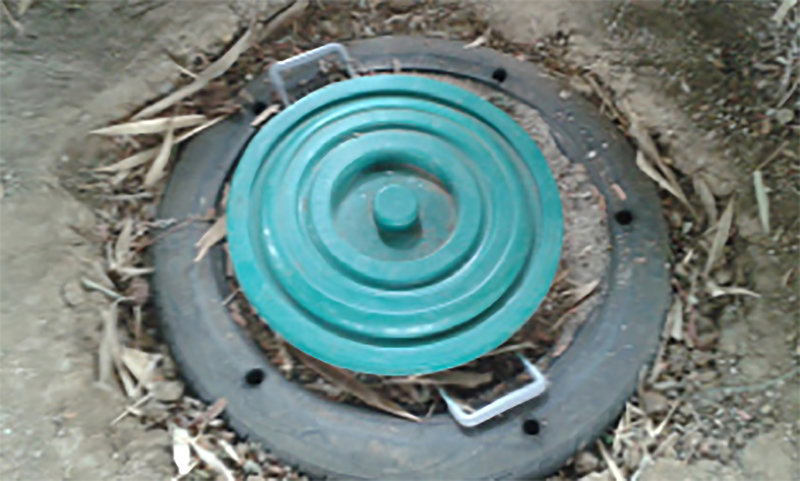The Cycle of Refinement: Seed Saving Idea Sharing
Published
2016-09-26
Mike McMahon of the Charis Teaching Farm, recently contacted us about an experiment to try to adapt the CO2 seed saving technique presented in AN28 to verify if it could work for his context. Mike and his team conducted an experiment building and utilizing a root cellar at the Charis Farm in Tak province of western of Thailand. They stored seeds in jars and other containers and recorded temperatures under different regimes.
During the experiment, they recorded the temperature and found that dry season (March – April) represents the period of most extreme temperature fluctuation. In January and February, the temperatures reach down 10C, and below 0C in the mountains. Mike and his team wanted to see if the use of an in-ground storage container for seeds could help to reduce extreme temperature fluctuations, increasing seed viability and vigor.
This is his report:
After digging a pit deep enough for the storage bin (a trash can) and wide enough for a recycled tire laid on its side, cover the bottom of the pit with 2-3 inches of sand. Place one tire in the pit with the bin sitting in the middle of the pit. Then, fill the empty space in the tire with sand. Next, place the second tire over and around the bin and fill this with sand. Backfill the space between the pit walls and the tires with excess soil. Finally, pour water over the tires to fill until the sand in the tires is saturated at the top. The basic premise of the idea is that the wet sand will help to insulate the root cellar from ambient temperatures and also draw off heat.
Our test was aimed at testing the cooling effectiveness of the root cellar. Future tests could be aimed at testing the germination success rate of seeds stored in the cellar and our farm house. However, given that temperature variation and extreme temperatures have been attributed to a decrease in seed viability in available literature, we felt this initial temperature test would be sufficient for the time being.
Findings from a Thermometer in the Farm House and in the Root Cellar.
Recordings were done by our Lead Farmer:
Data collected matched our expectations. The root cellar was warmer in the morning at 8am on average (27.8C) than in the farm house (27.7C). At 1pm, the root cellar averaged temperatures far below that of the farm house (28.9C versus 31.0C). In the afternoon, at 5pm, the root cellar averaged a lower temperature again (28.3C to 29.5C). Simply by evaluating the average temperature readings, it is clear that the root cellar is successful in not only lowering the seed temperatures, but also in lowering temperature fluctuations (as seen in a higher average temperature in the mornings).
As a bonus, for our statistic nerd friends, our own and outside consultation statistical analysis shows that our values were statistically significant with midday and afternoon temperatures having significant difference using a paired t-test with p < 0.01.
Overall, we are very pleased with this first model of root cellars and look forward to both recommending it to farmers in the area as well as performing further testing and modifications.
Special thanks to Mike McMahon and his team at Charis Project for sharing their technique and preliminary results. Feedback, comments and idea sharing from ECHOcommunity members help to refine innovations and options that will be of benefit to other development workers and to smallholder farmers. [ Share your story ]
Additional resources:
CO2 seed saving technique in ECHO Asia Notes 28
To learn more about the Charis Teaching Farm, please visit their webpage: https://charisteachingfarm.wordpress.com